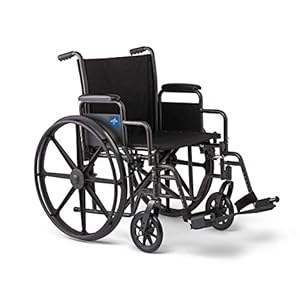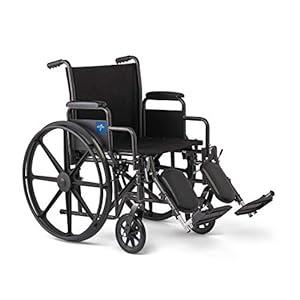
 Medical machine software program may be very various. From low-level firmware drivers to information evaluation and AI, to net growth and cybersecurity, the applied sciences are broad ranging, every with their very own quirks.
Medical machine software program may be very various. From low-level firmware drivers to information evaluation and AI, to net growth and cybersecurity, the applied sciences are broad ranging, every with their very own quirks.
In all this selection, one know-how is ubiquitous: Git! Your model management system (VCS) is all the time there, and it’s value taking a little bit of time to essentially get to realize it. Should you transcend the fundamentals, Git will show you how to develop medical machine software program quicker with out sacrificing traceability.
Medical machine software program requires additional layers of accountability above and past the same old software program greatest practices. One instance is expounded to configuration administration and sustaining a file of what modified between software program variations, which suggests protecting a transparent historical past of the software program’s growth.
It is advisable put in a little bit of time to make your personal psychological mannequin for a way Git works to take advantage of it. Let’s dive into three eye-opening realizations which assist me use Git higher.
- You Don’t Must Commit Every thing!
At its greatest, Git will get out of the way in which. The place I wish to be as a programmer is in “code mode” – the place I lose monitor of time hacking away at a brand new characteristic, or bug repair, or perhaps each. There’s a stress right here between getting the code written and constructing a wise historical past for future reviewers. The very last thing I wish to do is interrupt my programming to consider VCS and the way modifications are going to search for a reviewer. In spite of everything, it’s good apply to make commits small and self-contained.
Say you get carried away programming and made a pair unrelated modifications with out committing any of them. What do you do? Git separates the “working copy” – the place all native, uncommitted modifications are – from the “staging space” – the place you add modifications you wish to be dedicated.
Right here’s an instance for example learn how to use the staging space when engaged on a undertaking with an SPI driver, a show driver, and a few enterprise logic. Possibly the sources are organized like this:
|– Drivers/
| |– spi.c
| |– spi.h
| |– show.c
| |– show.h
|– App/
| |– app.c
|– …
You’ve been fortunately constructing out your SPI driver, however on the way in which, you’ve an thought for rendering pages extra easily in your show. You drop in just a few modifications to your show driver, and now you’ve modifications in each spi.c and show.c. Should you commit it all of sudden (“git add .”) you then’re tangling up modifications that aren’t associated, which isn’t good git hygiene. What for those who launched a bug whereas attempting to be intelligent along with your show driver? You’d should revert this patch after which pick the elements which can be solely associated to SPI to save lots of them from being dropped. Gnarly!
As a substitute, use Git’s highly effective staging space to tease out atomic modifications from the working copy. By including solely modifications associated to SPI first, committing these, then including show driver modifications, you’ve created two commits that are good and unbiased, however which come from the identical working copy!
git add Drivers/spi.c
git commit …
git add Drivers/show.c
git commit …
Discover the way you don’t have to consider what your subsequent commit will likely be earlier than you make the modifications. As a substitute, you will get again to coding and construct commits out of your modifications later! Git doesn’t punish you for getting misplaced within the programming; it helps you decide up the items after a caffeine-fuelled bug fixing session.
When the atomic modifications are localized to particular person information, teasing unbiased modifications into completely different commits is simple. However what if there are modifications in app.c which apply to each SPI and show modifications? As soon as once more, Git has it coated.
- Including Particular person Adjustments With –patch
Studying concerning the staging space is one factor, however realizing you could filter via modifications from inside a single file opens a brand new world of functionality. The “git add” command has a “–patch/-p” choice which takes you hunk-by-hunk via the information you’ve handed to it, letting you pull in solely what you want for the commit. You will get very particular with additions, splitting supplied hunks and even hand-picking traces by enhancing them. A bonus of constructing commits hunk-by-hunk is that you just’ll most likely write a greater commit message, as a result of the modifications will likely be recent in your thoughts.
Tip: use the “singleKey” config option to make navigating hunks quicker (git config –world interactive.singleKey true). You’ll want the Time period::ReadKey module for this to work.
The “–patch” choice is out there on extra instructions than simply “add”. Wish to toss one notably passive aggressive remark from a file? “git reset –patch”! Or wish to save only a line or two to your stash for later? “git stash –patch”!
- Git Historical past
“Historical past will likely be form to me, for I intend to jot down it.”
- You, opening your subsequent PR
Now that you just’re simply placing atomic commits collectively, you may take a look at the larger image of the story you’re telling with Git historical past. For instance, you’ve been engaged on a brand new characteristic for a of couple days within the acquainted “two steps ahead, one step again” sample of working new performance into the software program.
You introduce a brand new module to your codebase, however inadvertently trigger a bug some other place. So, you repair this bug and commit these modifications. This sample of introducing new code after which fixing bugs or regressions you beforehand launched continues for some time. Lastly, you’ve patched all of it up and your shiny new characteristic is able to be merged again into the “major” department.
Maybe the characteristic department appears somewhat like this:
$ git log –oneline –graph feature_branch
* (feature_branch) Fastened boundary case problem.
* Refactor show driver.
* Web page-wise rendering enhancements.
* Show renders page-by-page.
* (major) …
Whenever you merge this department in, it would carry all this historical past with it. That’s historical past that no one cares about. In 5 years while you’re reviewing the undertaking’s historical past, nobody will care about bugs that have been launched in a single commit and glued within the very subsequent commit. You’ll care about these commits as checkpoints throughout growth, however as quickly as all the pieces works, you gained’t want to recollect how you bought there. Reviewers simply wish to see the minimal changeset that will get the undertaking from pre-feature to post-feature, perhaps with a pair vital milestones in between. So how do you take care of this? You could possibly wait to commit something till the characteristic is 100% written and dealing, however that’s a dangerous spot to be halfway via growth.
Git involves the rescue once more with “git rebase –interactive”, letting customers interactively edit commit historical past. You may reorder, edit, drop, or “squash” commits from the historical past. Be aware that interactive rebasing modifications your Git historical past. That makes them probably very harmful. You may severely injury your repo right here for those who’re not cautious.
I like to recommend establishing the git distant host to solely enable “rewind” permissions to builders on branches that match a template like “dev/*”. It will maintain the primary department and different vital checkpoints intact it doesn’t matter what your devs do. On my tasks, “rewinding” is simply allowed on branches matching “tmp/*” and “dev/*”. As soon as the modifications are on a shared characteristic department or “major”, historical past gained’t change anymore! The place doable, take this concept to its logical conclusion by banning any pushes to the “major” department except they arrive from an accepted pull request.
Revisiting our instance characteristic department, here’s what the historical past appears like after a cleanup:
$ git rebase –interactive major..feature_branch
$ git log –oneline –graph feature_branch
* (feature_branch) Refactor show driver.
* Show renders page-by-page.
* (major) …
The 2 bug repair commits have been squashed into their mother or father commits. This makes for a pleasant clear historical past that clearly exhibits a brand new characteristic being launched to the codebase, with out the noise of characteristic growth errors.
Protecting a dependable historical past is one purpose to make use of a VCS – configuration administration is a key requirement of IEC 62304 for medical machine software program. Use interactive rebasing to make your historical past clear and simple to see how the software program progressed between two releases.
Conclusion
Sustaining a transparent historical past is a crucial facet of medical machine software program growth. When creating thrilling and wide-ranging performance for medical machine merchandise, Git’s highly effective staging space and interactive rebasing options will maintain you shifting quick and breaking much less.
Picture: Adobe Inventory
Levi Puckett is a Software Engineer at Starfish Medical. With a level in Electrical Engineering, he bridges the hole between electronics and high-quality embedded software program. Levi works in any respect ranges of medical machine software program, serving to firms develop efficient, modern, and protected software program for his or her new medical units.
Trending Merchandise










